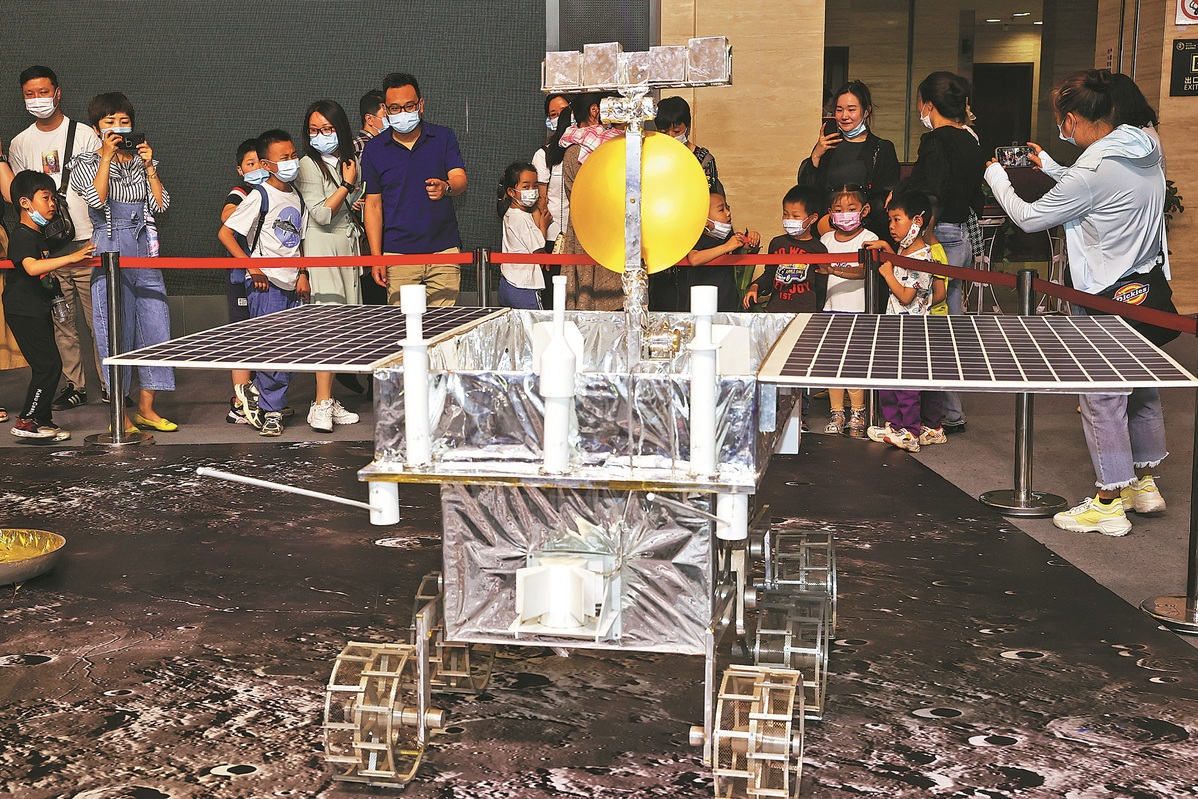Chang'e 7 to survey the lunar south pole in 2026


China's Chang'e 7 robotic mission will carry six science payloads built by foreign scientists to the moon's south pole, according to the China National Space Administration.
The administration announced on Wednesday in Wuhan, capital of Hubei province, that Chang'e 7, a key mission in the fourth phase of the country's lunar exploration project, is scheduled to be launched around 2026, and will survey the surface environment of the lunar south pole, water ice and volatile components of lunar soil, as well as carry out high-precision detection and analysis on the lunar terrains, compositions and structures.
To make the best use of opportunities in the Chang'e 7 mission and to better cooperate with international partners to explore the moon, the space administration issued in November 2022 an announcement of opportunities for international payloads on the Chang'e 7 probe, starting to solicit proposals.
Upon the solicitation's completion in January 2023, it had received 18 proposals from 11 countries and international organizations.
Based on the proposals' scientific objectives and engineering feasibility, six payloads submitted by six countries - Egypt, Bahrain, Italy, Russia, Switzerland and Thailand - and an international organization, namely the International Lunar Observatory Association, were selected for the Chang'e 7.
Among the selected science apparatus, three will be placed on the Chang'e 7 lander: the Laser Retroreflector Arrays, developed by the National Laboratory of Frascati under Italy's National Institute for Nuclear Physics to make high-precision measurement on lunar surface and provide navigation services of the Chang'e 7 orbiter; the Lunar Dust and Electric Field Instrument from the Space Research Institute of the Russian Academy of Sciences to detect the dusty plasma environment of the lunar surface; and the International Lunar-based Telescope of the International Lunar Observatory Association to conduct astronomical observations.
Another three will be mounted on the Chang'e 7 orbiter. They are: the Lunar Hyperspetral Camera, co-developed by the Egyptian Space Agency and Bahrain's National Space Science Agency, to identify materials and environments on the lunar surface; the Moon-based Two-channel Spectrometer for Earth Radiation Measurement from the Physical Meteorological Observatory in Davos (World Radiation Center) to monitor — for the first time from a lunar perspective — the radiation incoming to and outgoing from the Earth's climate system; as well as a sensor package for space weather global monitoring to provide alerts and warnings of magnetic disturbances and radiation due to solar storms.
- Henan retailer's reparation policy fosters workers' rights
- Shanghai offers blueprint for waterfront renewal
- University licenses smart fish feeding system for 20 million
- Shandong court sentences former insurance chief for bribery
- Culture high on agenda at Sanya tourism summit
- Chinese cities post strong performance in 2025 global innovation index





































